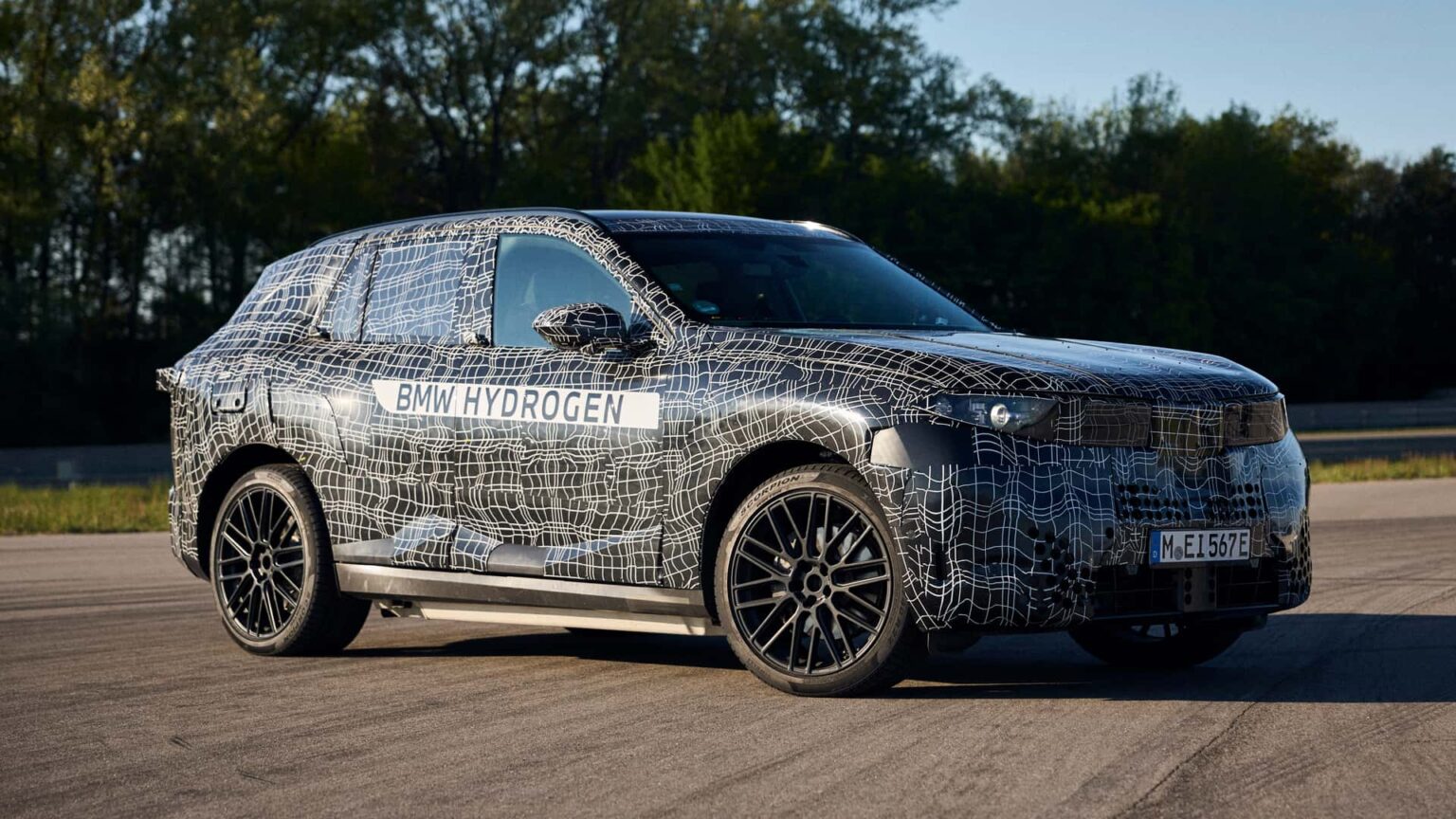BMW knows variety is the spice of life, which is why it plans to sell the next X5 with nearly every type of drivetrain. Alongside the usual gasoline, diesel, and plug-in hybrid versions, there will be this hydrogen fuel cell derivative co-developed with Toyota. But that’s not all; a battery electric vehicle is also in the pipeline. There are even rumblings of an EV with a range extender, something Bavaria has experience with, having previously sold the quirky i3 hatchback with a small gas engine acting as a generator.
BMW hasn’t shared details about the fifth-generation luxobarge but has confirmed its first hydrogen model will go into production in 2028. However, we won’t have to wait until then for the camouflage to come off. The new X5 (codenamed “G65”) is widely expected to debut as early as next year. In the meantime, these images provide our first official look at the Mercedes GLE rival in fuel cell guise.
Even with the disguise, several interesting details stand out. The Neue Klasse face is clearly hiding beneath the swirly camo, concealing the retro-inspired vertical kidneys seen on the new iX3. The headlights appear to have their final shape and size, though the inner graphics will look far nicer on the production-ready X5. Thankfully, BMW isn’t adopting split headlights here as it has on the bigger X7 and the bold XM.
The retro front grille isn’t even the most intriguing part. A closer look at the profile reveals the absence of conventional door handles. Instead, winglets integrated into the beltline recall BMW’s M8-based Speedtop and Skytop special editions, or even Ford’s Mustang Mach-E electric crossover.
Photo by: BMW
At the back, it seems the split tailgate is staying, as the rear hatch appears bisected by a black horizontal line. In today’s cost-cutting era, that’s a pleasant surprise, especially since the 5 Series Touring lost the ability to open its rear glass separately from the tailgate.
Unlike some rivals, BMW isn’t hiding the rear wiper under the roof spoiler for a cleaner look. The tiny, basic taillights are clearly placeholders and will be replaced by wider rear lights, likely similar to the new iX3’s prominent clusters that nearly meet at the center, if not for the roundel.

Photo by: BMW
BMW hasn’t revealed the interior yet, but the 2027 iX3’s cabin provides a clear preview. Expect a fully redesigned dashboard dominated by a 17.9-inch central screen. A pillar-to-pillar projection system called Panoramic Vision will replace the traditional instrument cluster. It will have three fixed tiles in the driver’s line of sight and six customizable sections on the passenger side projecting information at the base of the windshield.
The new X5 will drop the iDrive rotary knob and most conventional controls in the name of minimalism. In the second-generation iX3, even airflow direction is adjusted via the touchscreen. Sooner or later, all BMWs will follow this simplified approach. By the end of 2027, the company plans to launch more than 40 new or updated models with Neue Klasse DNA. The X5 will be among the first combustion-engined cars to adopt them when it lands in 2026, alongside the next-gen 3 Series Sedan.
Whether a three-row configuration will still be offered is uncertain, though BMW may instead push buyers toward the X7. The larger SUV enters its second generation in 2027 and is also expected to get a battery EV variant, though not a hydrogen fuel cell version.

18
Source: BMW
While the gasoline and plug-in hybrid X5s will be sold globally, the diesel is likely to remain mostly in Europe and a handful of other markets. The fuel cell, meanwhile, will probably be confined to only a handful of regions. At the end of 2024, there were only about 1,160 hydrogen refueling stations worldwide, according to a study conducted by H2Stations.org. That number may rise before 2028 when the iX5 Hydrogen launches, but BMW is unlikely to sell this version broadly given the severely underdeveloped infrastructure.
BMW and its partner Toyota are among the few automakers still betting on hydrogen. While Stellantis has recently abandoned its fuel cell ambitions, Hyundai, Honda, General Motors, and Renault/Alpine continue to back the technology.
Read the full article here



